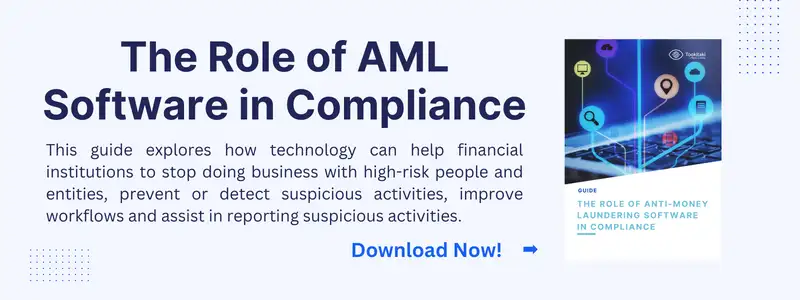Trust & Safety: Creating a Safe and Secure Environment
Introduction
Trust and safety are paramount in today's digital landscape, where users rely on online platforms for various purposes. Whether it's e-commerce, social media, or sharing economy platforms, establishing trust and maintaining safety are critical for fostering positive user experiences.
In this article, we will delve into the concept of trust and safety, explore its components, discuss its significance in various industries, and highlight best practices to ensure a secure and reliable environment for all stakeholders.
Key Takeaways
- Trust and safety encompass measures and practices aimed at creating a secure and reliable online environment.
- The three components of trust and safety are risk assessment, policy development, and enforcement/response.
- Best practices include user verification, content moderation, transparency, and continuous monitoring.
- Trust and safety are important in e-commerce, sharing economy, social media, and online payment industries.
- Trust and safety certifications validate platforms' commitment to user safety.
- Trust and safety professionals play a critical role in implementing and improving trust and safety measures.
Definition of Trust & Safety: Establishing Confidence and Security
Trust and safety refer to the measures and practices implemented to create a secure and reliable environment for users engaging in online platforms, services, and transactions. It encompasses strategies, policies, and tools designed to protect users from risks, such as fraud, harassment, misinformation, and other harmful activities. Trust and safety efforts aim to build confidence, foster positive user experiences, and safeguard the integrity of online ecosystems.
Components of Trust & Safety: Building Blocks for Security
Trust and safety comprise three key components that work together to establish a secure environment:
- Risk Assessment: Conducting thorough risk assessments is essential to identify potential threats and vulnerabilities within the platform or service. This involves analyzing user behavior, transaction patterns, content moderation, and other relevant factors to proactively detect and mitigate risks.
- Policy Development: Developing comprehensive policies and guidelines sets the framework for acceptable user behavior and establishes rules to prevent misconduct. These policies often cover areas such as content moderation, community guidelines, data privacy, and dispute resolution processes.
- Enforcement and Response: Implementing robust enforcement mechanisms and response protocols is crucial to address policy violations and security breaches promptly. This includes employing content moderation systems, user reporting mechanisms, and dedicated trust and safety teams to investigate and take appropriate actions when incidents occur.
Trust & Safety Best Practices: Ensuring a Secure Environment
To ensure trust and safety within online platforms, the following best practices should be considered:
- User Verification: Implement a robust user verification process to authenticate the identities of users and minimize the risk of fraudulent activities.
- Content Moderation: Employ effective content moderation practices to prevent the dissemination of harmful, illegal, or inappropriate content. This involves using automated tools, artificial intelligence, and human moderators to review and remove violating content.
- Transparency and Communication: Foster transparency by clearly communicating platform policies, rules, and guidelines to users. Provide accessible channels for users to report issues and seek assistance, and ensure timely and clear communication regarding trust and safety matters.
- Continuous Monitoring: Regularly monitor platform activities, user behavior, and emerging trends to identify new risks and adapt trust and safety measures accordingly. Stay updated with industry standards and collaborate with relevant authorities and organizations to address evolving threats.
Trust & Safety in Different Industries: Examples of Application
Trust and safety principles find application across various industries, including:
- E-commerce: Online marketplaces and retailers prioritize trust and safety to protect buyers and sellers from fraud, counterfeit products, and unauthorized transactions.
- Sharing Economy: Trust and safety are crucial in sharing economy platforms such as ride-sharing and accommodation-sharing services to ensure the safety and security of both service providers and users.
- Social Media: Social media platforms employ trust and safety measures to combat harassment, hate speech, and the spread of misinformation to create a positive and inclusive online environment.
- Online Payments: Trust and safety play a significant role in online payment systems to protect users' financial information and prevent fraudulent transactions.
Trust & Safety Certifications: Recognizing Excellence
Trust and safety certifications provide a way to validate and recognize platforms and organizations that prioritize user safety. These certifications often involve rigorous assessments of trust and safety practices, policies, and infrastructure. By obtaining such certifications, platforms can demonstrate their commitment to maintaining a secure environment and instilling confidence in their users. Examples of trust and safety certifications include ISO 27001, SOC 2, and PCI-DSS, which assess various aspects of data security, privacy, and risk management.
Trust & Safety Professionals: Safeguarding User Confidence
Trust and safety professionals play a crucial role in maintaining a secure and reliable online environment. These professionals are responsible for developing and implementing trust and safety strategies, policies, and enforcement mechanisms. They analyze user behavior, monitor platform activities, respond to incidents, and collaborate with relevant stakeholders to enhance trust and safety practices. Additionally, they stay updated with industry trends and emerging risks, ensuring continuous improvement and adaptation of trust and safety measures.
Conclusion: Upholding Trust and Ensuring Safety
Trust and safety are foundational elements for any successful online platform or service. By prioritizing the establishment of trust, implementing robust safety measures, and fostering transparent communication, organizations can create a secure environment that instills confidence in their users. The proactive detection of risks, the enforcement of policies, and the collaboration with trust and safety professionals are essential for effectively addressing potential threats. As the digital landscape continues to evolve, trust and safety will remain vital in building sustainable and trustworthy online ecosystems.
Anti-Financial Crime Compliance with Tookitaki?





